Explore The Legendary Reclining Vishnu Statue Of Budhanilkantha Temple In Kathmandu In 2025
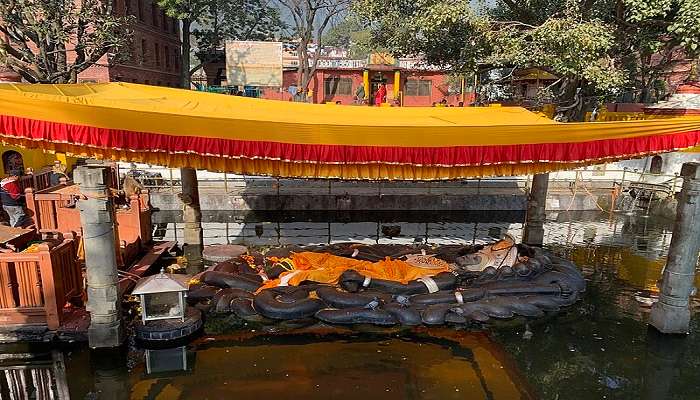
Budhanilkantha Temple in Kathmandu is famous for the giant stone image of Lord Vishnu lying down on the coils of a serpent. Sculpted of black basalt, the statue was produced from a single stone and is 5 metres long and represents Vishnu in the Ananta-shayana posture. To enhance the aesthetic and religious value of worship and its attendants, the temple is located near the Shivalik Hills, full of rich vegetation. It is an important temple for Vaishnavism and is especially important for people celebrating the festivals of Haribodhi Ekadashi and Janmashtami. The temple’s compound is surrounded by a beautiful garden and a sacred pond that augments the serene feel of the structure and is thus considered a cultural and religious place to visit.
Budhanilkantha Temple In Kathmandu History
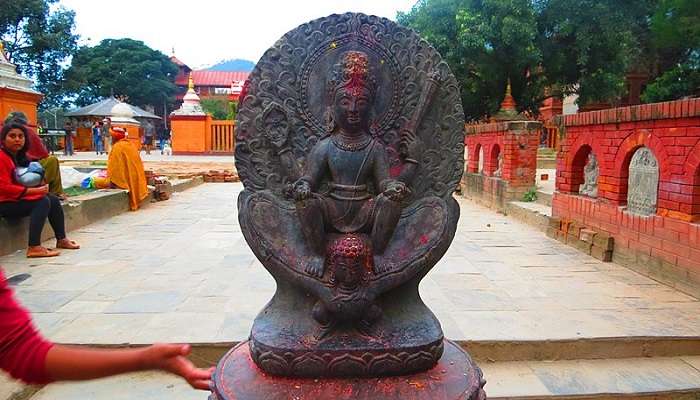
The Budhanilkantha Temple is as ancient as the time frame of the 7th century AD. This idol of Lord Vishnu is a major attraction, built at a 5-metre height and constructed from a basaltic structure estimated more than 1400 years ago. This fine art piece is directly chiselled on an uncut slab of stone and placed on a preternatural snake’s body. Vishnu has four arms and has a Sudarshana Chakra in the first hand, a club in the second hand, a conch shell also in the third hand, a gem in the fourth hand and Kirtimukha images on the crown along with a silver crown in the top.
The calm and quiet atmosphere of the temple, along with its historical and aesthetic values, identify the place as crucial. More to the religious aspects, it holds a religious connection to Hindu mythology, as depicted in the legend of the churning of the ocean and the sacred Gosaikunda Lake. The temple hosts thousands of pilgrims for the Haribodhini Ekadashi Mela celebration that is held here.
Also Read: Places To Visit Near Kathmandu
Budhanilkantha Temple In Kathmandu Origin
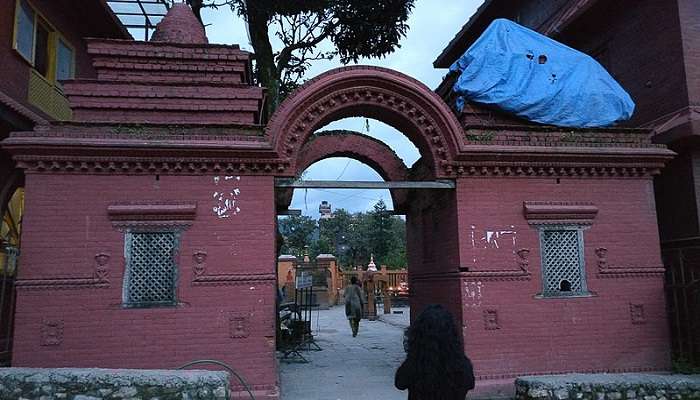
The statue’s story dates back to Raja Haridatta Barma, known for his daily visits to four sacred sites dedicated to Narayana—Changu, Chainju, Ichangu, and Sikhara Narayana. According to legend, Jalasayana Narayana appeared to him in a dream, revealing that he was the original Narayana buried under layers of earth and stones washed down from the Satarudriya mountain.
The Raja was instructed to unearth the deity. During this process, he accidentally damaged the deity’s nose with his spade, leaving it scared to this day. In reverence, the Raja built a tank and a temple for the deity, naming him Budhanilkantha.
Budhanilkantha Temple In Kathmandu Mystery
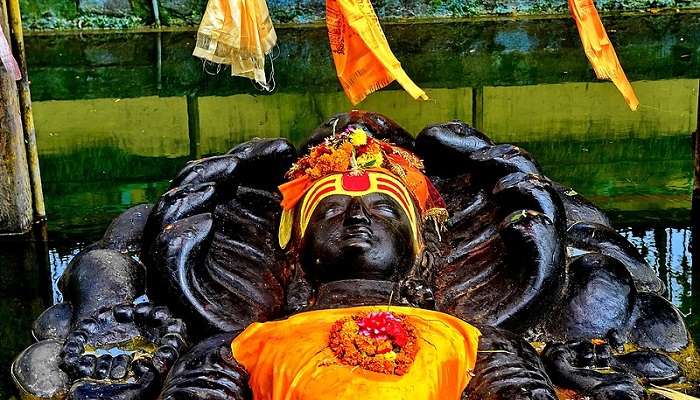
According to legends and history, King Pratap Malla once had a vision that was so vivid it shaped the fate of future Nepalese monarchs. The vision was a warning telling the king to never enter the temple. To avoid any risk of death, neither he nor his successors went there.
Another most intriguing aspect of Budhanilkantha is its statue, which appears to float in the pond. Scientists in 1957 came up with several theories to explain this phenomenon. One theory was that since the statue was made from a silica-based stone with an unusually low density, it floats in the water. Local folklore adds a mystical touch to the statue, claiming that a mirror-like image of Lord Shiva appears beside the statue in the pond. This reflection is said to be visible during the annual Shiva festival held every August, even though the statue itself faces the sky.
Related Post: Tourist Places In Nepal
Budhanilkantha Temple In Kathmandu Timings & Entrance Fee
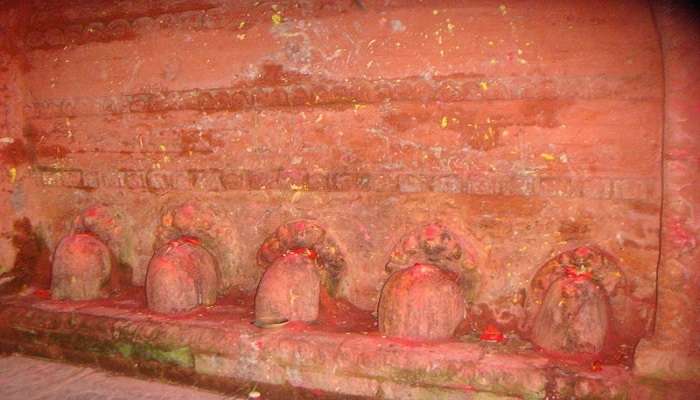
Budhanilkantha Temple entrance fee is zero and is open to visitors daily from early morning until late evening. Budhanilkantha Temple timings are from 5:00 AM to 12:00 PM and from 1:00 PM to 7:00 PM.
To further immerse oneself spiritually, taking part in the morning or evening aarti is recommended.
Budhanilkantha Temple In Kathmandu: Must-See Nearby Attractions
Nearby, visitors can discover other attractions, including scenic gardens, vibrant local markets, and monasteries. Whether you’re seeking spiritual solace or adventure, Budhanilkantha Temple and its surroundings promise an unforgettable experience.
1. Swayambhu Mahachaitya
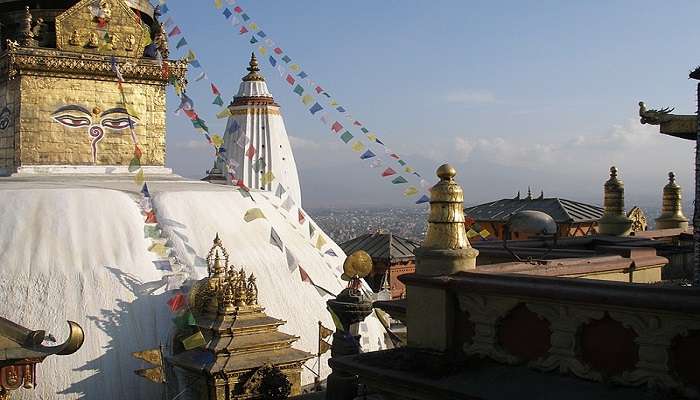
People often call Swayambhu Mahachaitya the Swayambhunath Stupa. This beautiful Buddhist site sits on top of a hill in Kathmandu Nepal. You’ll notice its massive stupa with a golden spire and the Buddha’s all-seeing eyes painted on it. When you look out from here, you’ll see a fantastic view of the whole Kathmandu Valley. This iconic stupa, which people think is more than 2,000 years old, has lots of smaller stupas and shrines around it. This makes it a busy place for spiritual activities and the site is also hailed as a UNESCO World Heritage Site.
Timings: Open 24 hours
Entry Fee: NPR 50 for SAARC nationals and NPR 200 for foreign nationals and accessible for local residents
Related Post: Hostels In Nepal
2. Boudhanath Stupa
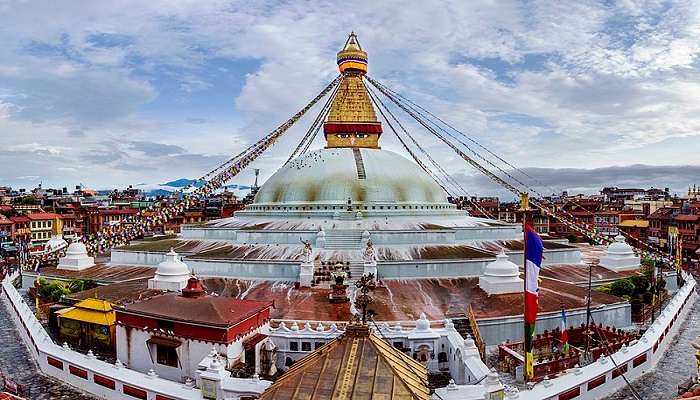
This is recognized as one of the most critical Buddha Stupa located in Nepal, it is also known as the Boudhanath Stupa. This giant stupa, located in the Kathmandu Valley, is a significant centre for Tibetan Buddhists, and its large mandala shape catches the eye. The stupa’s central dome has a base surrounding it, which represents the universe, while the tall spire symbolises the world’s axis. People flock to this lively spot to walk around the stupa, turn prayer wheels, and soak in the calm spiritual atmosphere. Both pilgrims and tourists consider this site a must-visit destination.
Timings: Open 24 hours
Entry Fee: NPR 100 for SAARC nationals and NPR 400 for foreign nationals and accessible for local residents
3. Bhaktapur Durbar Square
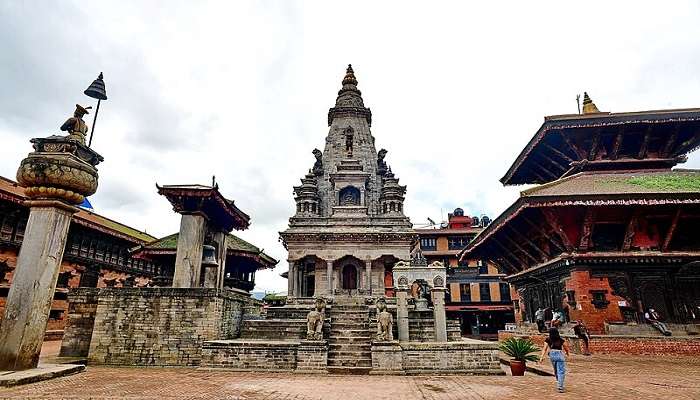
Bhaktapur Durbar Square, a UNESCO World Heritage Site, is an exquisite example of mediaeval Newari architecture and urban design. Located in Bhaktapur, this historic square is renowned for its well-preserved temples, palaces, and pagodas. Key highlights include the 55-Window Palace, the Vatsala Temple, and the iconic Nyatapola Temple, which stands as a testament to the architectural prowess of the Malla kings. The square’s intricate wood carvings, vibrant courtyards, and traditional Newari eateries provide visitors with a glimpse into the rich cultural tapestry of the region. It’s a perfect blend of history and living tradition.
Timings: 9 AM to 6 PM
Entry Fee: NPR 500 for SAARC nationals and NPR 1500 for foreign nationals and accessible for local residents
Related Post: Trekking In Nepal
4. Kopan Monastery
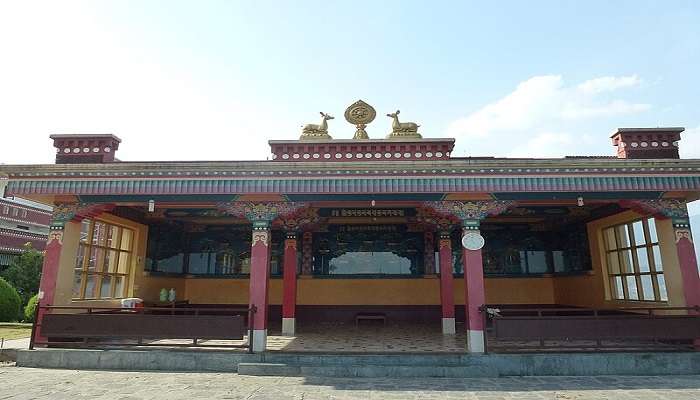
This monastery lies on a hill near Kathmandu, Nepal, and is a peaceful retreat. This monastery was one of the major centres for the Foundation for the Preservation of the Mahayana Tradition, an FPMT organisation, and is set in a peaceful environment to study Buddhism. It was founded in 1971, they offer courses in teaching and meditation based on Buddhism. Kopan Monastery offers views over the Kathmandu Valley and intricate religious artistry. Many people come here to deepen their spiritual practice or just to enjoy a peaceful moment.
Timings 10 AM to 4 PM
Entry Fee: None
5. Garden Of Dreams
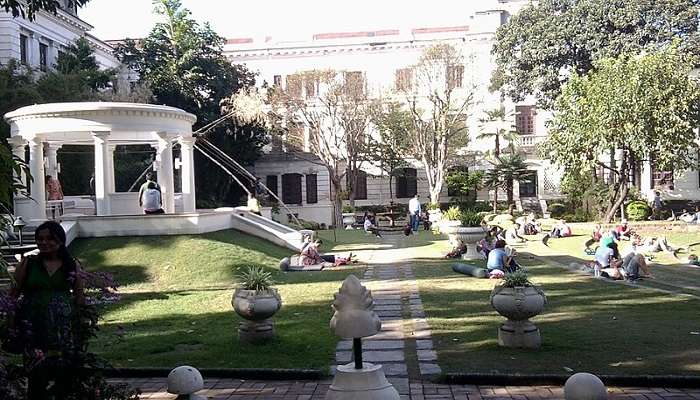
The Garden of Dreams is an avenue of rest that is sited in the middle of Kathmandu. This neoclassical garden is uniquely built to provide serenity and has been recently renovated into a peaceful oasis from the urban landscape. As characterised by its green lawns and serene environment and enhanced by availing fountains and ponds, the garden is an ideal place for ultimate relaxation. Designed by the architect Kishore Narshingh, the garden features colonial-era architecture, including charming pavilions and arched walkways. Visitors can just take a walk around it or enjoy a quick meal at the onsite cafe, or just enjoy the calm atmosphere. For those looking for a quiet and a beautiful space, this is a great spot.
Timings: 9 AM to 10 PM
Entry Fee: NPR 320 for Adult and NPR 160 for Children
Related Post: River Rafting In Nepal
6. Kumari Chowk
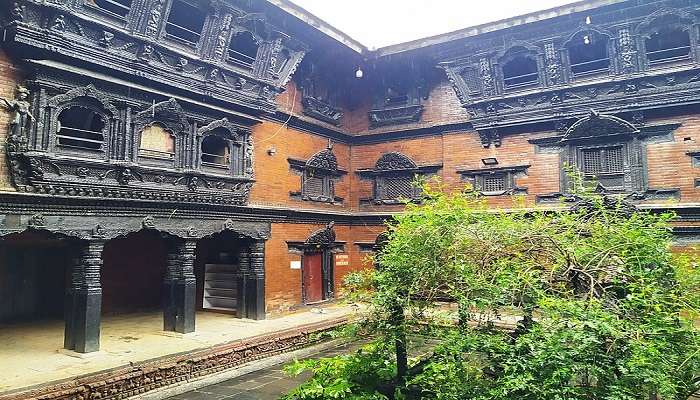
Located in the centre of Kathmandu, Kumari Chowk is the home of the living goddess, or the Kumari. This ancient Newari courtyard has been a residence for a small girl worshipped as the incarnation of the Goddess Taleju on Earth. Beautiful wood carvings and fine details ornament the place of the palace, testifying to this place’s rich cultural heritage. It is expected to come for a view of the Kumari, sometimes appearing at her window in the palace, giving one a unique glimpse of this special, treasured custom.
Timings: From morning to evening
Entry Fee: None
You May Also Like To Read: Heritage Places In Nepal
The Budhanilkantha Temple in Kathmandu offers an excellent opportunity to explore the core of Nepali spirituality far from any noise. This visit reveals its history and encourages you to pray there, get closer to the heavens, and ponder about the purpose of life. Book your trip to Kathmandu now and immerse yourself in the profound spiritual experience at Budhanilkantha Temple.
For our editorial codes of conduct and copyright disclaimer, please click here.
Cover Image Credit : Chainwit. For Wikimedia Commons
Frequently Asked Questions About Budhanilkantha Temple In Kathmandu
How can I get there from central Kathmandu?
It’s easy to get to Budhanilkantha Temple from the city centre of Kathmandu using either a taxi or public transport. The place is located around ten kilometres away from Thamel and if you go by car it will take approximately thirty minutes to reach there.
Are there any distinctive traditions or practices at Budhanilkantha Temple?
The Budhanilkantha Temple is famous for its daily rites that take place for Vishnu’s lying statue. Major celebrations occur during Haribondhini Ekadashi festival when this temple sees a huge influx of Kerala devotees.
Is taking pictures allowed in Budhanilkantha Temple?
In general, one can take photos outside the main temple; however they are forbidden from photographing the deity itself as well as certain rites.
Are there any facilities at Budhanilkantha Temple?
Basic facilities such as restrooms and parking are available. There are a few shops around the temple, but it's good to bring water and snacks.
Are there any restrictions or dress codes for visitors to Budhanilkantha Temple?
Visitors are expected to dress modestly; this includes covering the shoulders and knees. Removing one's shoes before stepping into the inner sanctum is required. Following these guidelines out of regard for religious practice would be respectful.
People Also Read:
Banashankari Amma Temple Amareswara Temple Achyutaraya Temple

Unveil the hidden treasures of the globe and turn every travel dream into reality. As a Content Writer, I am passionate enough to craft stories from ancient wonders to modern marvels. My words paint the picture-perfect itinerary for unforgettable experiences. Let my words be your trusted guide to immerse in the diverse culture and discover the beauty of the unknown.











